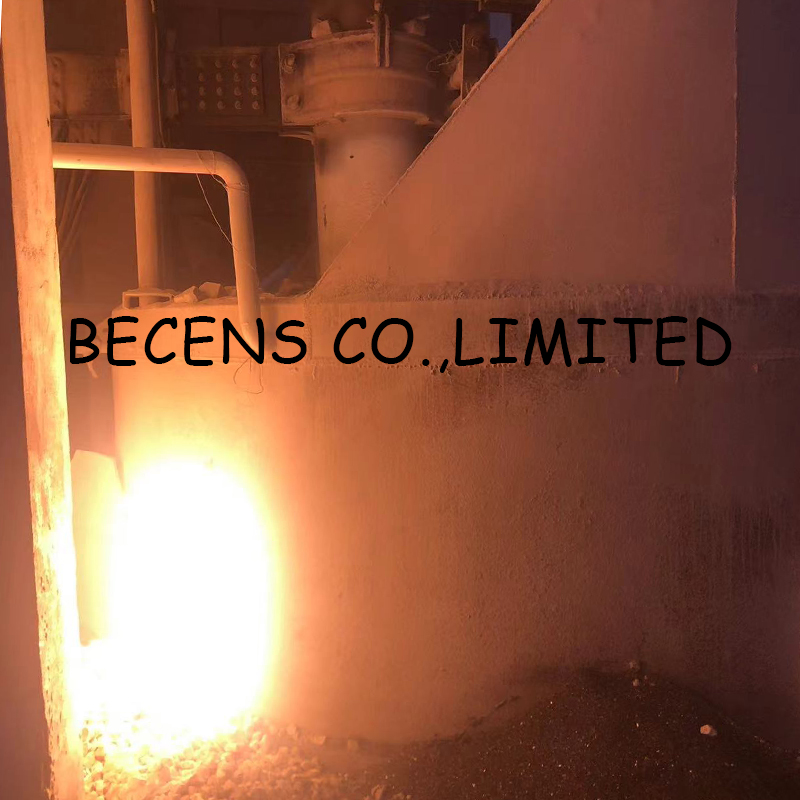The Production Of Silicon Carbide
Silicon carbide is a kind of artificial abrasive, and most of silicon carbide is smelted by resistance furnace, so the formation mechanism and smelting principle of silicon carbide are of great significance to production.In addition to innate advantages, sandblasting abrasive Its own product attributes are also extremely high-end, in order to remain unbeaten in the market competition. https://www.becens.com
The formation mechanism of silicon carbide
There are many explanations for the formation of silicon carbide, and there are three main explanations.
1. Direct formation theory: This explanation holds that silicon carbide is formed by the reduction of solid carbon to liquid silicon dioxide. There is no intermediate reaction process and compound formation.
2. Intermediate silicon theory: This explanation holds that carbon first reduces silicon dioxide to silicon, and silicon (liquid or gaseous) reacts with carbon to form α-SiC, which is transformed into β-SiC at high temperature.
3. Silicon monoxide theory: This explanation holds that silicon dioxide is first reduced to silicon monoxide, then silicon monoxide reacts with carbon to generate silicon vapor, and then reacts with carbon to form silicon carbide. Silicon monoxide also reacts with carbon at the same time Silicon carbide is formed.
The differences of the above three viewpoints are one-step reaction or multi-step reaction, and whether the intermediate product is Si or SiO. The same point is that the final product and the reaction equation are consistent, that is, SiO2+3C=Si+2CO.
Manufacture of silicon carbide
There are three types of charge for making silicon carbide abrasives: main raw material, auxiliary raw material and returned charge. The main raw materials include silica sand and carbon raw materials, which are indispensable for the manufacture of silicon carbide and provide the basic chemical reactants in the furnace. Auxiliary raw materials include sawdust and table salt, which do not directly participate in the basic chemical reactions in the furnace, but only play a role in promoting them. Under certain conditions, they can be omitted or added less. Returned materials include roasted materials, spent materials, secondary silicon carbide and washed sediments. Reasonable use can save the main raw materials. Improve economic efficiency.
1. Silica sand, also known as quartz sand, comes from river sand, sea sand, vein quartz and quartzite. Vein quartz and river sand are mostly used in China. Vein quartz is an igneous rock that is translucent or milky white. River sand is a kind of sedimentary ore sand with high purity and suitable particle size, which can be used as raw material for smelting silicon carbide. Mining and processing costs are low, only half of vein quartz.
In the selection of raw materials, when smelting green silicon carbide, vein quartz with a purity higher than 99.3% should be selected, otherwise more salt needs to be added, the season will be unstable, and economic benefits will be affected. When smelting black silicon carbide, the purity should be higher than 98.5%. When the purity of silica sand is 98.5-99.0% and petroleum coke ash is 0.5%, qualified black silicon carbide can be refined without special measures. When the purity of the silica sand is above 99.%, some recycled materials can also be added, which can save raw materials and increase the output of the furnace. When the purity of silica sand is lower than 98.5%, it will affect the product quality and output.
The choice of silica sand particle size should be considered comprehensively in terms of chemical reaction speed, etc., and should not be too thick or too fine.
2. Carbon raw material, the requirement for refining silicon carbide is to have enough active ingredients and less impurities. Although there are many types of carbon, only petroleum coke, pitch coke and low-ash anthracite can meet the requirements. Tests have shown that low-ash anthracite has the best indicators, but there is not much mining and processing in my country at present, and it is in the development stage; the output of pitch coke is small, and petroleum coke is widely used. The particle size of coke has a great influence on the product quality of silicon carbide. If the particle size is too coarse, the reaction is not complete, and the crystals are easy to be mixed with particles; if the particle size is too fine, the gas permeability of the charge is not good, and it is easy to spray the furnace.
3. Sawdust, the function is to increase the gas permeability of the charge. Any kind of wood can be used for the furnace, but hardwood is best. However, there are still some side effects. One is to reduce the content of useful components in the furnace; the other is to produce foul-smelling methyl mercaptan (CH2SH) gas.
4. Salt, there are different opinions about the role of table salt in smelting silicon carbide. Some think it is a purifying effect, and some think it is a catalytic effect. The purer the raw material, the less table salt is added. However, adding salt will have many side effects, such as reducing the content of active ingredients in the furnace charge, increasing heat loss, and causing corrosion to production equipment.
5. Return charge refers to the secondary products and sediments generated by smelting. Because the recycled material contains silicon carbide, the recycled material can also generate first-grade silicon carbide. But according to the situation, the waste should be used rationally.
6. Lack of materials, usually only thermal insulation materials. If there is surplus, it can be made into low-grade silicon carbide, which also has good economic benefits.
Smelting process
There are two processes for smelting silicon carbide in my country: the new material method and the roasted material method. The difference between the two processes lies in the furnace position of the furnace, the raw material and the furnace charge. The two processes are basically the same.
The batching and mixing are made by weighing various raw materials according to the batch list and process regulations and mixing them uniformly.